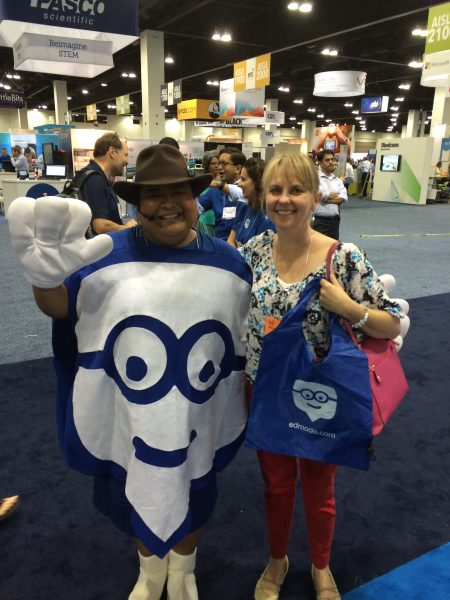How an Ed-Tech Startup Can Rise Above the Noise at ISTE

When I worked as a public radio reporter, I rarely went to conferences or trade shows. It’s not where you found the news. Now that I’ve made the transition to startup CEO, some conferences are must-attend events. One of them is ISTE.
This year, more than 16,000 teachers and administrators gathered in Denver, Colo. to share ideas, meet new people and see old friends. Every year ISTE seems to grow, in attendees and in the hype on the exhibit show floor. It’s really like a carnival for adults complete with barkers, games and giveaways. As a small company it’s hard to be heard over the noise (and the smell of popcorn).
This year we didn’t exhibit at ISTE, but I attended the event to hold meetings and scope out the landscape. I spoke with several startups to see how they were heard over the noise.
The center of the exhibit hall has the most valuable real estate and the biggest companies and displays. The large publishing companies (Pearson, McGraw Hill), technology players (Google, Amazon), and more well established ed tech (Edmodo, BrainPOP) all have a lot of real estate, including about a dozen people on the floor, and presentation theaters. They are offering hands-on learning, demos and pens, bags, candy, prizes.
The startups are positioned along the sides in much less expensive real estate. But the traffic is still good, says Jenn Kim, of ed-tech startup Plickers. When Kim hands me her card, I see her official title is “Wearer of Many Hats.” Now that’s a true startup.
Plickers is a student-response system that empowers teachers to collect real-time data and modify their instruction. This is her third ISTE, but she says her strategy has changed a lot over the years. The first year they didn’t get a booth, but used a “guerilla marketing” approach.
They wore brightly colored shirts featuring their company name, and stood in well-trafficked places in the convention center, hoping teachers would ask them about Plickers. The administrators of ISTE weren’t too happy with this approach and often asked them to move along, but it’s a strategy many other companies still use.
This year they invested in a booth because, Kim said, “we are well-enough known that teachers want to find us.” And the booth gives Plickers’ teachers a space to present.
“Our goal isn’t to be competing at the level of Edmodo,” said Kim. Edmodo had a dancing logo (see photo).
Another small ed-tech startup, PledgeCents, which helps teachers raise money for digital tools and classroom purchases, decided not to exhibit at ISTE, but attended.
“It’s important to be here, but it’s too hard to complete with booth like Microsoft,” said Ricky Johnson, the co-founder of PledgeCents.
It’s too easy to get dwarfed, because you are not giving away shiny things.
For me, it all comes down to our customers. Is this conference the best way to interact with our customers? If so, then it’s worth going up against the big guys, even if you don’t have a person wearing your logo.
See also:
- How Startups Can Become Social Media Influencers
- Flexiblity is Key to Finding a K-12 Foothold for Ed-Tech Products
- Understanding Ed-Tech Product Pricing for Educators and Entrepreneurs

Any startup is always a risk and a possible loss of money. After years of thinking, I decided to buy and open a school for future businessmen. Now I need an investment to buy one of these schools: https://betterestimate.com/real-estate/austin_tx/river-place-school. I am launching the project very soon.